Fix Your Pop Up
A skilled, fluid, and effortless movement, or a fumble and flail towards kookdom. If your pop up is in the fumble and flail category, then this post is a mandatory read on your path to better surfing.
The Pop Up: It is a movement that is either unconsidered by those that execute it flawlessly. Or it is a movement that becomes a bane of surfing. To those of you that have issues, problems, and difficulties with the start of your surfing, this is how you fix your pop up.
SURF POP UP TECHNIQUE
First, you must be clear that there is no singular way to pop-up “correctly”. As you’ve just seen in the Pros in Slow Mo video, they all pop-up differently, but it’s smooth, flowing, and ultimately results in an upright yet casual surf stance.
Some plant the rear foot first, while others plant the feet simultaneously. You’ll notice some still have their hands on the board when their front foot plants, while there are others that have already begun uprighting the torso and arms while the front foot comes in contact with the board.
The point is this: there is no one right way, however, there are consistencies you want to aim for.
There will also be individual needs for the technique based on aspects like your height, your femur length, the board size, and previous joint injuries, surgeries, and mobility.
What you can and should take from that video is that the movement is smooth. It is not a “POP” so much as it is a casual “let’s fluidly get my legs underneath me so I can stand and begin maneuvering the board to interact with the wave face”.
Heavy pops and pounds aren’t the way to go. Smooth it out, flow it out, and aim to get upright into that relaxed yet athletic surf stance.
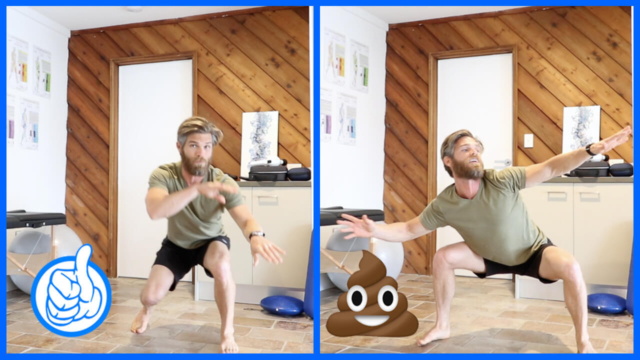
SURFING POP UP BODY POSITION
START WITH THE END IN MIND

Where’s you’re head at? Are you staring down at the nose of your board worrying about the drawing wave face? Or are you already looking down the line, thus affecting your shoulder and torso position, and already reading the physics of the wave?
Your eyes, head, shoulders, and torso position are a key component to a good pop up. You can’t fix your pop up unless you start looking where you want to go. Eyes up, head up, pop-up. Watch that Pro Slow Mo video again and pay attention to their upper body posture prior to popping up, during, and just after.
If you get a better idea of where your body needs to end up, and how it needs to start, the in-between process will become easier. If you need to start at A, and und up at C, you should have a better idea of what B needs to,… well… be. (that was damn clever).
WHAT’S YOUR POP UP PROBLEM?
Let’s create a bit of clarity on what your problem is, so you can have a better idea of what you need to implement to fix your pop-up.
Popping Up is a Skill
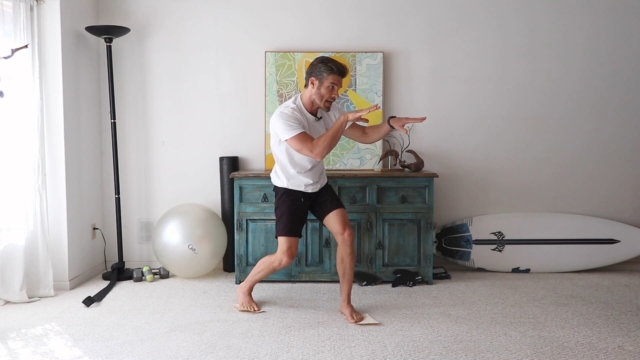
Good surfers make the technical movement of a pop-up look easy and fluid after years of practice, while inefficient pop-ups may create faulty movement patterns. These patterns result in bent forward drop knee falls and missed waves.
This skill is a movement pattern, meaning it becomes a subconscious movement habit. There isn’t a consideration as it happens automatically. I equate it to the ease with which you can put a key into a car’s ignition without looking for the millimeter wide hole to fit the key in.
Your nervous system has hardwired the pop-up movement pattern, making it a technical reaction that demands a fully functioning body. The solution to fixing your pop-up is to practice perfect repetition and ensure that your body moves in the manner required for a successful pop-up.
What most technique coaches fail to consider is whether your body, it’s structure, and its ability to move through joints is what is limiting the skill and technique of popping up fluidly. So can you move?
SKILL IS BUILT ON FOUNDATIONS OF MOVEMENT
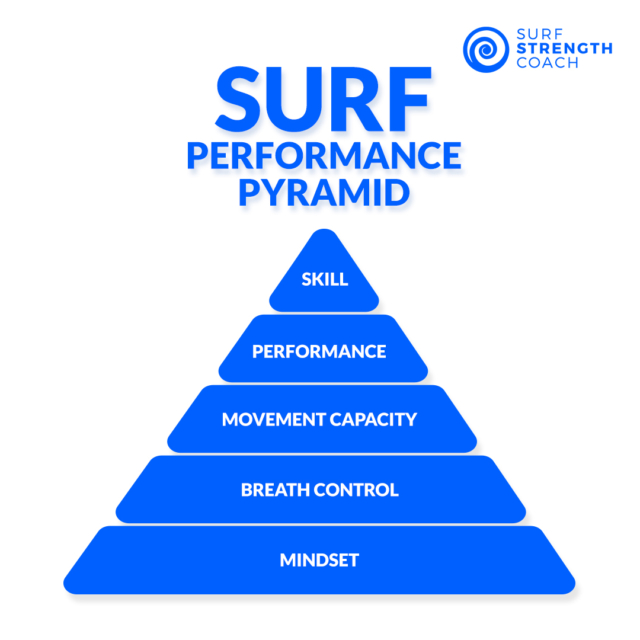
Skill, the act and art of surfing (and popping up), is built upon foundations of whether or not your body can move well. Does your ankle have an adequate range of motion? How about your knee and hip?
Do you have enough core control and lower abdominal strength to stabilise the pelvis so that there is a “platform” of control for you to whip your hips underneath you? The ability to move through joints and the ability to control those movements with strength lay the foundations for the skilled and fluid pop up.
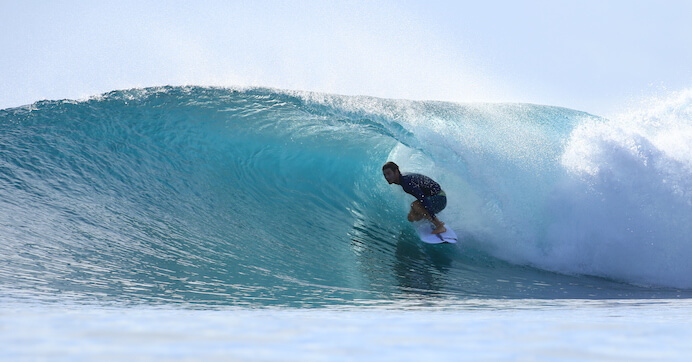
Can you deep squat? Try it now. Ass to grass deep squat. Don’t roll collapse your arches, and don’t rotate your feet out more than 30 degrees.
How does it feel? Do the joints hurt? Where’s the restriction? Does a previous hip reconstruction limit your ability? Maybe a deep squat is flawlessly easy for you. If so, that’s a good thing. Not only for your joint health long-term, but also because it demonstrates that joint mobility isn’t restricting your pop up.
If you have problems on that ass to grass deep squat you not only need to likely work on the mobility of your lower body joints. But it’s quite possible you’ve got mobility limitations negatively affecting your pop up, and other aspects of your surfing.
I look at the ability to deep squat because surfing requires you to get into positions like me in that barrel pic.
A tight hip or knee won’t let you get there. That low barrel crouch position is essentially a step in the process of a fluid pop up. You would have seen that repeatedly in that slow-mo pro pop up video.
You will fix your pop up by becoming clear on what foundations are limiting your skill and then dialing in the technique.
I walk you through the entire process in my FIX YOUR POP UP PROGRAM
STRETCHES & DRILLS TO FIX YOUR POP UP
Any skilled movement in life and sport requires certain physical attributes in varying amounts.
The pop up requires certain amounts of joint mobility, aspects of strength, bits of power, and layered on skill. Not to mention the awareness of reading an ocean, timing a wave, and the innate experience of being in the ocean and interacting with the physics of a wave.
If your hips can’t move, then your skill is likely severely limited.
A tight and restricted hip limits your ability to pull your leg underneath your body. This forces you to bend the torso forward, likely too far, so it’s throwing your weight forward and causing you to fall over your toe side rail. Kook-dom. The body is negatively effecting skill and technique.
If you mobilise your hips however, it doesn’t automatically improve the skill. It opens the door and takes the brakes off your ability to practice and access that skill. It needs to be applied to practice, and then it still needs to be implemented where it counts… the ocean.
This should make sense by now, or at least I hope it does. Improve your limitation, or eliminate it, then practice the skill.
The skill is improved through repetitive practice so that it becomes efficiently engrained in the body, hardwired. Your aim is to eliminate movement limitations so you can work on the skill unimpeded by a body that doesn’t move well.
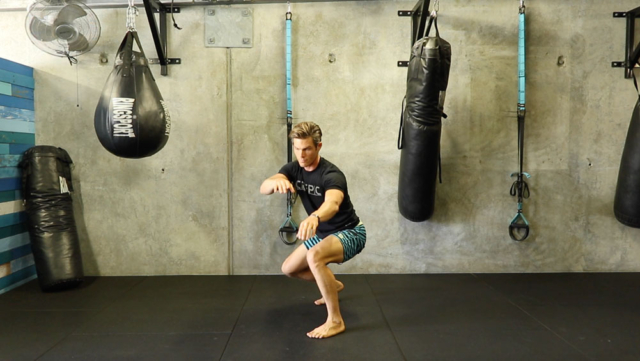
This is the point at which actual pop up practice on dry land is highly beneficial. I’ve even recommended to clients to get a foam top and practice in some 1-foot surf. Drill the skill.
Let’s say you’ve got that ass to grass deep squat, so you know it’s not a movement restriction.
Maybe you’re just too weak. Perhaps those little weak arms are too gassed from paddling out and having to duck dive some set waves.
So when it goes to popping up there isn’t enough strength endurance in your pushing muscles to provide a fast and flowing push to swing your lower body underneath you.
Assess your limitations. Eliminate them. Get more mobile, and layer on functional strength. Add in the essential skill practice. Boom. Fix Your Surf Pop Up.
HOW TO IMPROVE THE ACTUAL SURF POP UP SKILL
It may be that your skill just plain sucks and you’ve embedded a less than optimal movement pattern into your nervous system.
You would simply need to drill perfect technique in a non-stressful surf environment, and continue to progress that in different wave situations. This is where skilled pop up practice at home, or in the gym setting becomes highly relevant.
As I mentioned earlier in the article, the technique can and does vary from person to person, depending on injuries, age, and type of surfboard. I get deep into technique, as well as the entire assessment process of finding your limitations, and strengthening your body specifically for a good pop up, and improving your surf-time in my Fix Your Pop Up Program.
You could have just one of those issues, like a tight hip or a restricted ankle, maybe a sprinkling of weak core and a bad shoulder, or combinations of those issues. Getting clear on the limitations specific to you is the key to truly fixing your pop up, and working on an effortless skill.
THE MENTAL GAME TO FIXING YOUR POP UP

I’ve touched on how a skilled movement is ingrained in your nervous system already. But what I haven’t discussed is a threat and anxiety and how that will put an immediate halt to learning.
So much of good surfing is an ability to read the ocean. To see swell lines and make decisions on where and how the wave is going to break. The speed that this wave’s inertia will hit the reef and how fast it will stand up. This “reading” allows you to make better-informed position about your pop up.
Will it jack up and require a higher speed pop up, or is it a tapered take off that will let you casually get to your feet? I see so many failed pop ups because of the inefficiency of reading surf. This is a truly difficult thing to teach and I see it really only developing with more time in the ocean.
What you can work on, however, is your mindset and reaction to the wave and to the ocean.

When working on a skill you want to eliminate variables so that you can truly work on the fluidity of whatever that skill is. You want to have zero anxiety. No frustration. Be zen mind. Clear the road for the nervous system to learn the pattern of movement.
You can implement this by working the pop up drills on dry land. I get into the specific techniques and drills in great detail in my Fix Your Pop Up Program. You need to remove the stress variables and uncertainty to drill the pattern.
If you get into the ocean, become overwhelmed by other surfers, get anxiety-ridden about the surf, and overly stress about the perfection of the pop up, the skill improvement is dead. When under threat, or high speed, your body will likely revert to that old pattern it knows all too well, the wonky pop up.
Speed is key when catching waves, executing turns, and performing tricks.
That is why it’s crucial to actually drill your perfect pop up technique on dry land. And then ideally go practice it in clean surf, of a size that is absolutely non-threatening to you. You also need a smile on your face. I’m serious. Get into that brain space of enjoyment, fun, and happiness, because the stress and over-thinking will kill the skill acquisition process.

Incorporating dry land training into your routine will help you build the necessary muscle memory and confidence to perform the skill smoothly and efficiently, and with speed. Dry land drills allow you to focus solely on the movement pattern without the added variables of the ocean environment. Additionally, you can track your progress and make adjustments to your technique more easily on dry land. So, make sure to incorporate dry land training as a regular part of your skill acquisition process.
Now go and Fix Your Pop Up.
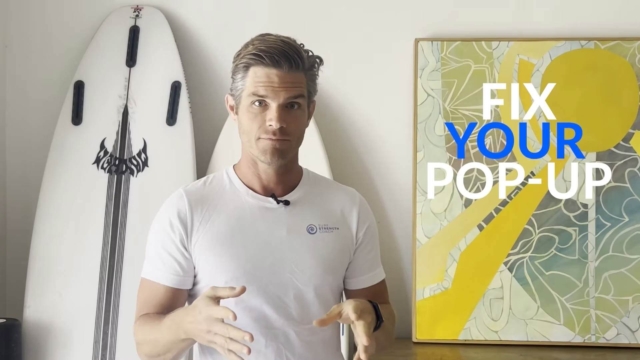
Respect the fact that it will take repetition, and those pro pop ups you’ve seen have been embedded into their bodies with thousands and thousands of reps.
IS YOUR SURF POP UP FRUSTRATING YOU?
If you’re frustrated with your pop up, and want to simply surf more fluidly, and get to your feet with ease, you’ll love my Fix Your Pop Up Program.
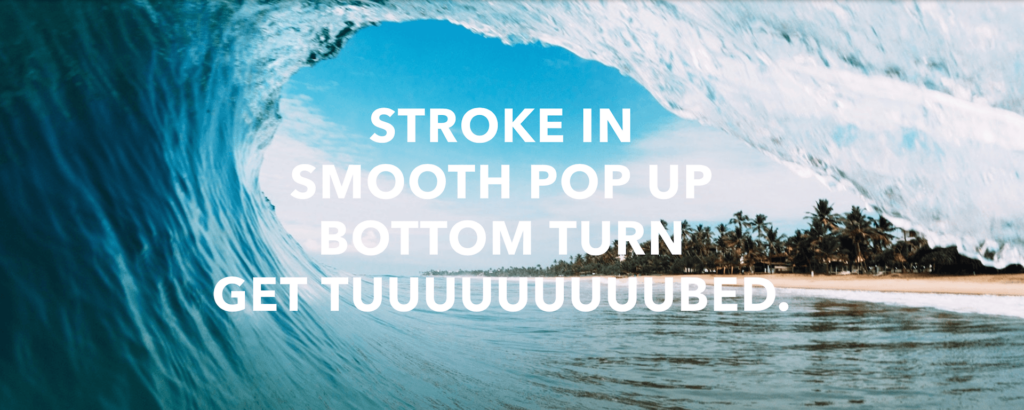

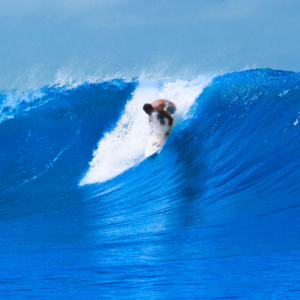
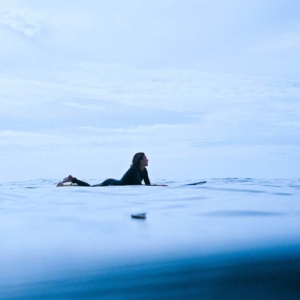
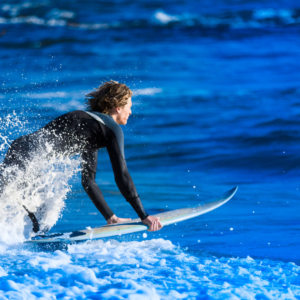
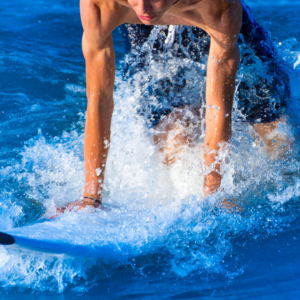
Comment